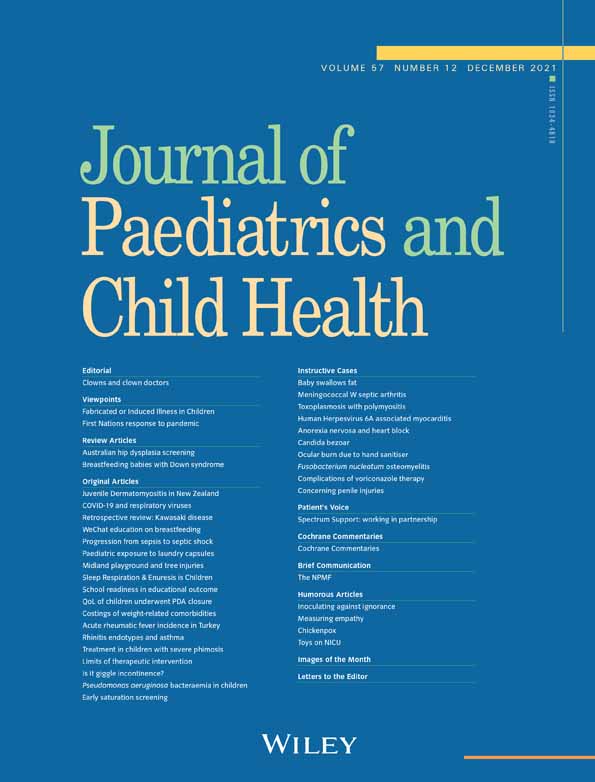Urinary incontinence during laughter in children: Is it giggle incontinence?
Conflict of interest: None declared.
Abstract
Aim
Giggle incontinence is a distinct entity of childhood daytime urinary incontinence (DUI), where children wet themselves only when they laugh. The prevalence of true giggle incontinence is unknown, with confusion about the diagnosis of urinary incontinence occurring during laughter and true giggle incontinence. The aim of the study is to improve our understanding of urinary incontinence during laughter by comparing those children with children who have DUI at other times, but not with laughter.
Methods
We conducted a retrospective medical record review of children with DUI who presented to a tertiary continence service from 2017 to 2018, collecting data on age, gender, associated comorbidities, lower urinary tract symptoms, investigations, provisional diagnosis at first visit and initial treatment responses. Differences between those with DUI occurring during laughter and those with DUI at other times, but not with laughter were compared using standard statistical methods.
Results
Of the 277 new patients seen during the study period, 140 (51%) had DUI, and of these, 72 (51%) had DUI occurring during laughter. Children with incontinence occurring during laughter were more likely to have incontinence associated with other activities. One child had giggle incontinence according to the International Children's Continence Society's definition. Four other children were referred specifically for urinary incontinence associated with laughter, with the term giggle incontinence sometimes used by the referring doctor.
Conclusion
Children with DUI commonly experience incontinence during laughter, but true giggle incontinence is rare. Correct diagnosis is essential as it directs treatment.




